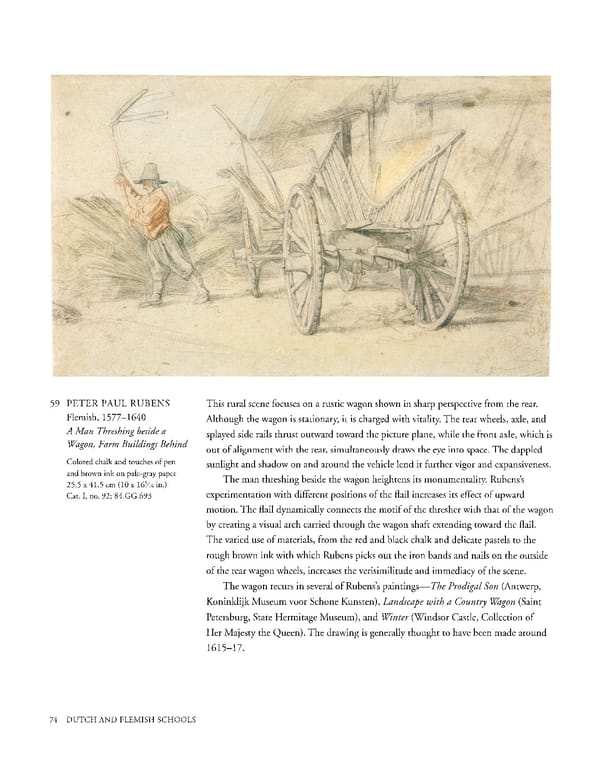59 PETER PAUL RUBENS This rural scene focuses on a rustic wagon shown in sharp perspective from the rear. Flemish, 15771640 Although the wagon is stationary, it is charged with vitality. The rear wheels, axle, and A Man Threshing beside a splayed side rails thrust outward toward the picture plane, while the front axle, which is Wagon, Farm Buildings Behind out of alignment with the rear, simultaneously draws the eye into space. The dappled Colored chalk and touches of pen sunlight and shadow on and around the vehicle lend it further vigor and expansiveness. and brown ink on palegray paper 25.5 x 41.5 cm (10 x 6 5/16 in.) The man threshing beside the wagon heightens its monumentality. Rubens's Cat. I, no. 92; 84.GG.693 experimentation with different positions of the flail increases its effect of upward motion. The flail dynamically connects the motif of the thresher with that of the wagon by creating a visual arch carried through the wagon shaft extending toward the flail. The varied use of materials, from the red and black chalk and delicate pastels to the rough brown ink with which Rubens picks out the iron bands and nails on the outside of the rear wagon wheels, increases the verisimilitude and immediacy of the scene. The wagon recurs in several of Rubens's paintings—The Prodigal Son (Antwerp, Koninklijk Museum voor Schone Kunsten), Landscape with a Country Wagon (Saint Petersburg, State Hermitage Museum), and Winter (Windsor Castle, Collection of Her Majesty the Queen). The drawing is generally thought to have been made around 161517. 74 DUTCH AND FLEMISH SCHOOLS
 Masterpieces of the Getty Museum: Drawings Page 74 Page 76
Masterpieces of the Getty Museum: Drawings Page 74 Page 76